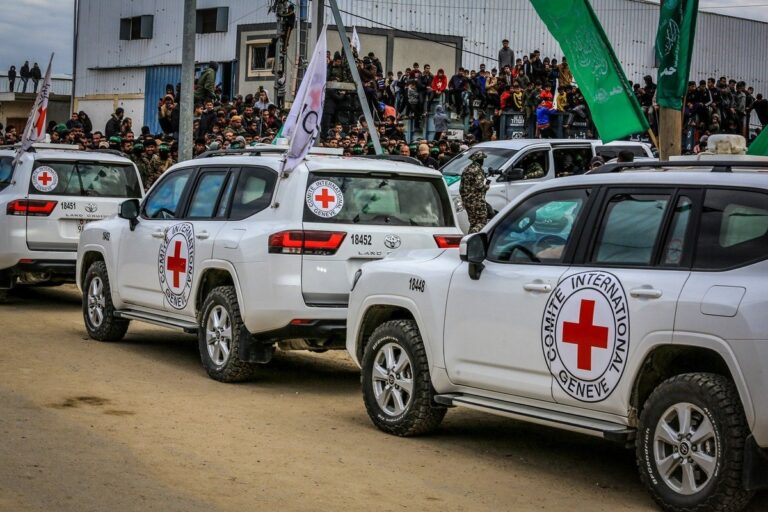Hurricane Ida is looking eerily like a dangerous and perhaps scarier sequel to 2005’s Hurricane Katrina, the costliest storm in American history. But there’s a few still-to-come twists that could make Ida nastier in some ways, but not quite as horrific in others.
“The main story with Katrina was storm surge damage, and over a vast area. The main story with Ida will be a combination of wind, storm surge, and fresh water flooding damage,” said meteorologist Jeff Masters, who flew hurricane missions for the government and founded Weather Underground.
Ida made landfall on the same calendar date, Aug. 29, as Katrina did 16 years ago, striking the same general part of Louisiana with about the same wind speed, after rapidly strengthening by going over a similar patch of deep warm water that supercharges hurricanes.
What could be different is crucial though: direction, size and strength.
“Ida will most definitely be stronger than Katrina, and by a pretty big margin,” said University of Miami hurricane researcher Brian McNoldy. “And, the worst of the storm will pass over New Orleans and Baton Rouge, which got the weaker side of Katrina.”
Ida was a strong Category 4 storm with 150 mph (241 kph) winds when it made landfall, “a sneeze away from becoming the fifth Category 5 landfall on the continental U.S.,” McNoldy said.
Katrina weakened quite a bit before landfall, striking Louisiana as a Category 3 storm with 127 mph (204 kph) winds.
Katrina hit Louisiana from due south, while Ida is coming to the same part of the state from southeast. On Sunday, Ida’s hurricane-force winds extended 37 miles (about 60 kilometers) from the center, compared to Katrina’s hurricane-force winds that spread 98 miles (158 kilometers) from the center when it made landfall, McNoldy said.
“This has the potential to be more of a natural disaster whereas the big issue in Katrina was more of a man-made one” because of levee failures, said McNoldy. Levee failures pushed Katrina’s death toll to 1,833 and its overall damage to about $176 billion in current dollars, and experts don’t expect Ida to come near those totals.
DIFFERENT DIRECTION
Ida came to the same general place from a slightly different direction. Several hurricane experts fear that difference in angle may put New Orleans more in the dangerous storm quadrant — the right front part of a hurricane — than it was in Katrina, when the city was more devastated by levee failure than storm surge. Katrina’s northeast quadrant pushed 28-foot (8.5-meter) storm surges in Mississippi not New Orleans.
Ida’s “angle is potentially even worse,” McNoldy said. Because it is smaller “it’s not going to as easily create a huge storm surge … but the angle that this is coming in, I think is more conducive to pushing water into the lake (Pontchartrain).”
That northwestern path of Ida not only puts New Orleans more in the bullseye than it did in Katrina, but it also more targets Baton Rouge and crucial industrial areas, Masters said. He said Ida is forecast to move through “the just absolute worst place for a hurricane.”
“It is forecast to track over the industrial corridor between Baton Rouge and New Orleans, which is one of the key infrastructure regions of the U.S., critical to the economy,” Masters said. “You’re probably going to shut down the Mississippi River for barge traffic for multiple weeks.”
Meteorologist Steve Bowen, head of global catastrophe insight at the risk and consulting firm Aon, said the impact will be felt beyond coastal areas.
“We’re certainly looking at potential losses well into the billions,” Bowen said.
SIZE MATTERS
The difference is size is not just physically huge, but it matters for damages. Storms that are bigger in width have larger storm surge because of the broader push of the water.
Ida “is not going to generate the huge storm surge like Katrina did, it’ll have more focused storm surge like (1969’s) Camille,” Masters said.
But larger in size storms are often weaker, Bowen said. There’s a trade off of intense damage in a smaller area versus less damage, but still bad, in a wider area. Bowen and Princeton University’s Gabriel Vecchi said they don’t know which scenario would be worse in this case.
RAPID INTENSIFICATION
Ida late Saturday and early Sunday feasted on an eddy of what’s called the Loop Current, going from 105 mph winds to 150 mph winds (169 kph winds to 241 kph winds) in just eight hours. The Loop Current is this deep patch of incredibly warm water. It takes warm water off the Yucatan Peninsula does a loop in the Gulf of Mexico and spins up the eastern edge of Florida into the Gulf Stream. Water above 79 degrees (26 degrees Celsius) is hurricane fuel.
Normally when a storm intensifies or stalls it takes up all of the region’s warm water and then hits colder water that starts to weaken the storm or at least keeps it from further strengthening. But these warm water spots keep fueling a storm. Katrina powered up this way and so did Ida, gaining power over an area with hurricane fuel more than 500 feet (150 meters) deep, “just a hot tub,” McNoldy said.
“Running over these Loop Current (eddys) is a very big deal. It’s really dangerous,” said climate and hurricane scientist Kossin of The Climate Service.
In the past 40 years more hurricanes are rapidly intensifying more often and climate change seems to be at least partly to be blame, Kossin and Vecchi said. Hurricane Grace already rapidly intensified this year and last year Hanna, Laura, Sally, Teddy, Gamma and Delta all rapidly intensified.
“It has a human fingerprint on it,” said Kossin, who with Vecchi was part of a 2019 study on recent rapid intensifications.
NEW EYEWALL
After a hurricane rapidly intensifies it becomes so strong and its eye so small that it often can’t quite keep going that way, so it forms an outer eyewall and the inside eyewall collapses, Kossin said. That’s called eyewall replacement.
When a new eyewall forms, often a storm becomes larger in size but a bit weaker, Kossin said. So key for Ida is when and if that happens. It happened for Katrina, which steadily weakened in the 12 hours before it made landfall.
Ida has started the process of eyewall replacement, but McNoldy said he doesn’t think it matters.
“It has run out of time to do anything that would make a difference.”
HISTORY
Meteorologists have improved forecasts and they hope that Louisiana is better prepared than in 2005 with a stronger levee system. However, Bowen said Ida is coming a year after Hurricane Laura smacked Louisiana in 2020 with 150 mph winds.
“No U.S. state since 1851 has ever recorded back-to-back years of 150+ mph hurricanes making landfall,” Bowen said. “Following Laura’s landfall in 2020, Louisiana is about to make unfortunate history.”
(AP)











